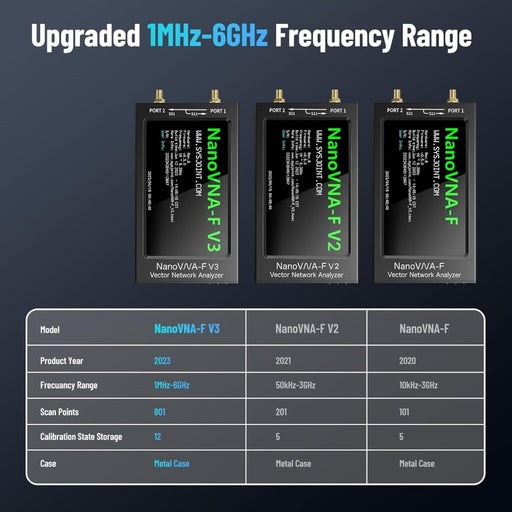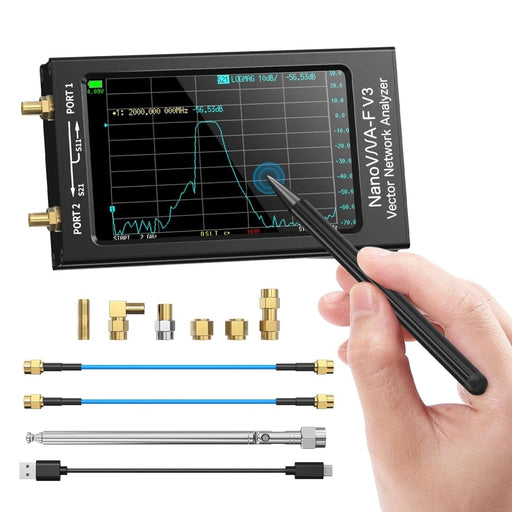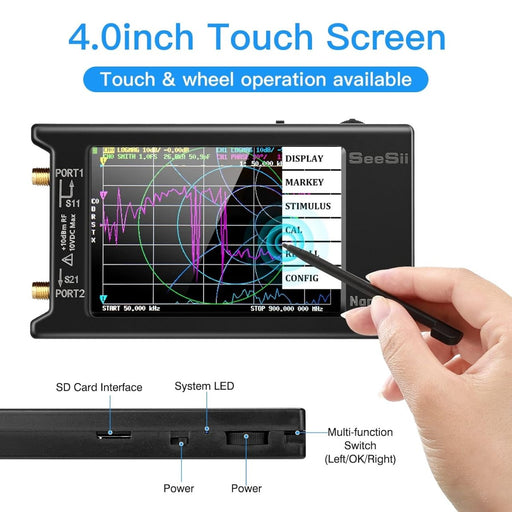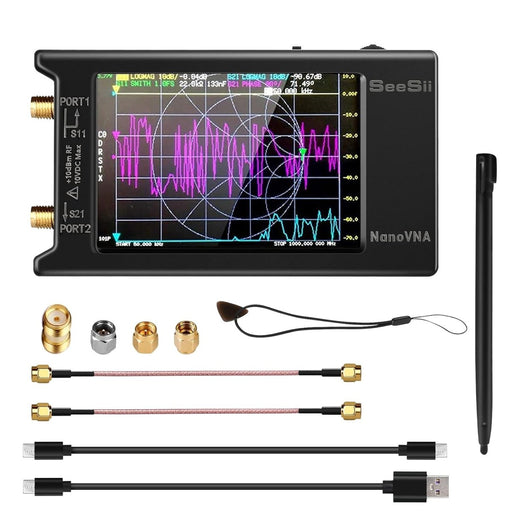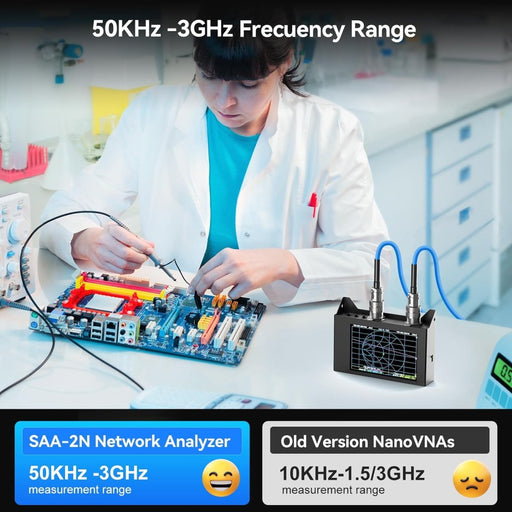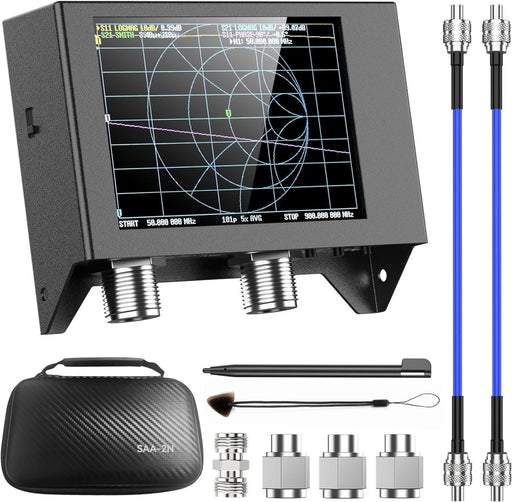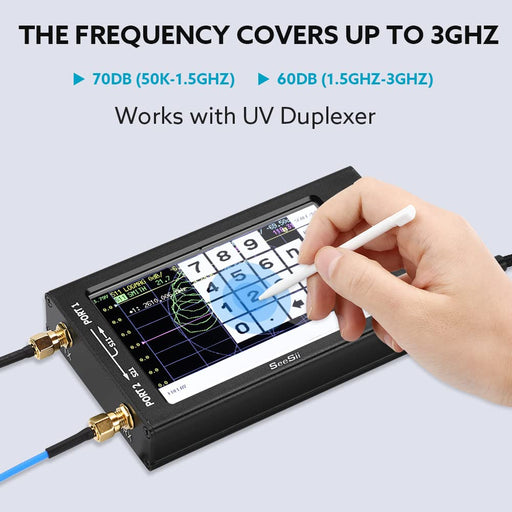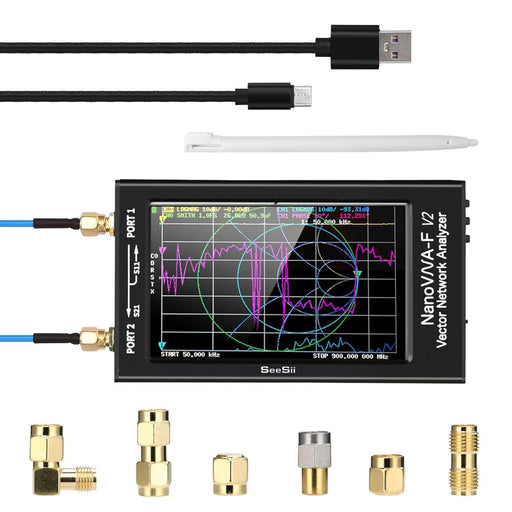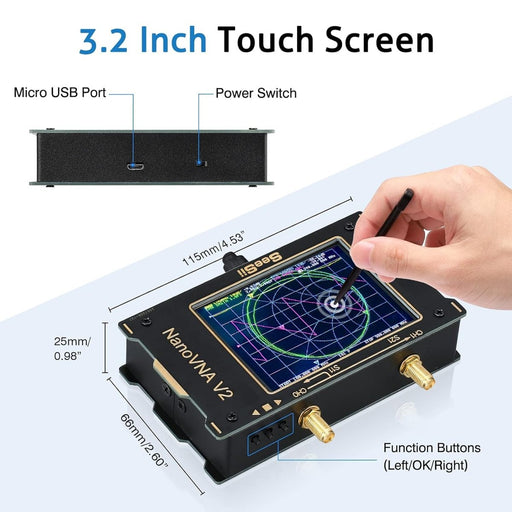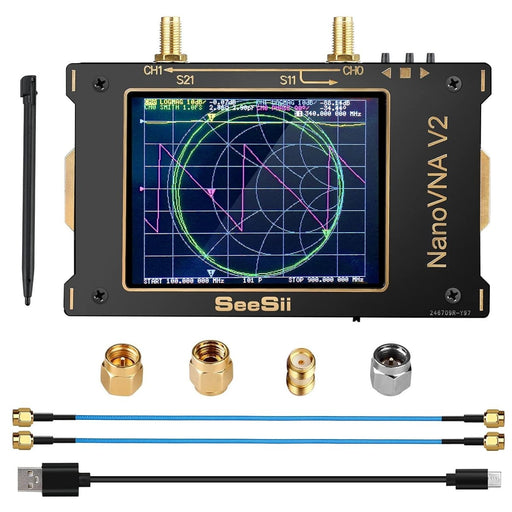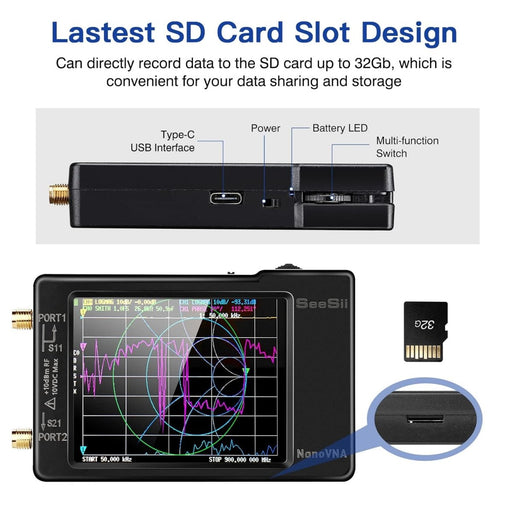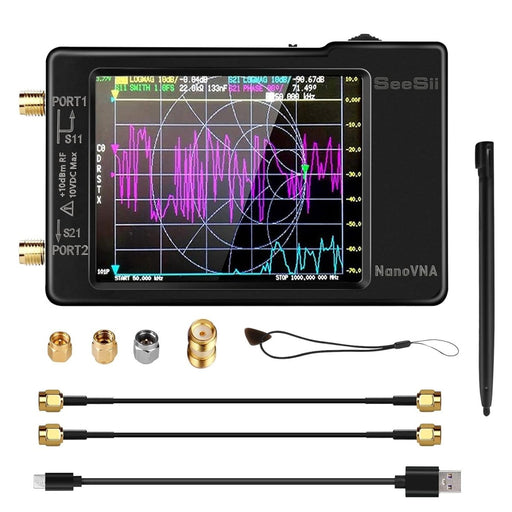What Is A Nanovna Antenna Analyzer?
A nanovna antenna analyzer is a portable, handheld device used to measure the impedance, SWR, and other key parameters of an antenna system for efficient tuning and performance testing.
Can A Nanovna Antenna Analyzer Be Used For HF Antennas?
Yes, a nanovna antenna analyzer is suitable for HF (High Frequency) antennas, providing accurate measurements for frequencies in the HF band and beyond.
What Is The Purpose Of An Analyzer Antenna?
An analyzer antenna is used with an antenna analyzer to evaluate and measure parameters like the impedance and efficiency of an antenna, aiding in fine-tuning for optimal performance.
Can I Use A Nanovna Antenna Analyzer For VHF/UHF Antennas?
Yes, a nanovna antenna analyzer can be used to test and tune VHF (Very High Frequency) and UHF (Ultra High Frequency) antennas, providing precise measurements across a wide frequency range.
What are the different types of network analyzers?
Network analyzers are essential tools in the field of electrical engineering, particularly for testing the performance of radio frequency (RF) and microwave components. There are several types of network analyzers designed to meet various measurement needs and complexities. Here’s an overview of the primary types of network analyzers:
Scalar Network Analyzers (SNA): These analyzers measure the magnitude of an input signal versus the frequency but do not provide phase information. SNAs are typically used for simple assessments of component characteristics such as gain and power. They are less complex and generally more affordable than vector network analyzers. Scalar analyzers are ideal for situations where only amplitude information is needed, such as measuring signal strength or filter transmission.
Vector Network Analyzers (VNA): VNAs provide both the magnitude and phase information of the signal, offering a more comprehensive analysis. They can measure complex impedance, reflection coefficients, and S parameters (scattering parameters), which are vital for understanding the behavior of RF components in various conditions. VNAs are more sophisticated and are critical in designing, testing, and optimizing components like antennas, mixers, and amplifiers.
Large Signal Network Analyzers (LSNA): LSNAs are designed for analyzing the performance of components under large signal conditions, typically at or near their operating limits. They are used to measure both the amplitude and phase of the harmonic components of an active device under test. This is crucial for testing power amplifiers and nonlinear devices where the performance under large signal conditions can significantly differ from that under small signal conditions.
Real-Time Spectrum Analyzers (RTSA): While not traditionally categorized under network analyzers, RTSAs are worth mentioning as they are used in network analysis for real-time capture and analysis of transient and wide-bandwidth signals. They are invaluable in environments where signals change rapidly, such as in radar and electronic warfare.
Each type of network analyzer serves specific roles in RF and microwave engineering, from basic quality assurance and control applications to advanced research and development. Choosing the right type depends on the specific requirements of the project or application, including the range of frequencies to be analyzed, the nature of the components being tested, and the level of detail required in the measurement.
Do I Need To Calibrate A Nanovna Antenna Analyzer?
Yes, like any precision measurement tool, a nanovna antenna analyzer needs to be calibrated to ensure the most accurate measurements, especially for high-frequency applications.
Is the tinySA using the same HW as the nanoVNA?
No, the tinySA HW is very different from the nanoVNA and specifically optimized for its spectrum analyzer and signal generator functions. The tinySA does however use the same display, battery, and housing as the nanoVNA-H.
Who would use a spectrum analyzer?
Spectrum analyzers are indispensable tools across various sectors where detailed analysis of signal spectra is crucial. Here’s an overview of the professionals and industries that frequently use spectrum analyzers:
- RF Engineers and Technicians: In the realm of radio frequency engineering, spectrum analyzers are fundamental for designing, testing, and troubleshooting RF components and systems. These professionals use the tools to measure signal integrity, power levels, and noise characteristics to ensure that RF systems are optimized for performance and compliance with regulatory standards.
- Telecommunications Specialists: Within the telecommunications industry, spectrum analyzers help monitor and maintain infrastructure by analyzing signal transmission and detecting sources of interference. This ensures the reliability and efficiency of communication services like cellular networks, satellite communications, and radio broadcasting.
- Electronic Design Engineers: These engineers utilize spectrum analyzers during the design phase of electronic circuits and systems to analyze the frequency characteristics of new devices. By doing so, they can ensure that electronic components function correctly within the intended frequency ranges and interact without causing undue interference.
- Network Technicians and Administrators: In network operations, whether for data communication or broadcasting, technicians use spectrum analyzers to set up, maintain, and optimize performance, ensuring that networks operate within the designated spectral boundaries and without interference.
- Quality Control Engineers: In electronics manufacturing, quality control is paramount. Spectrum analyzers play a critical role in the production line to test and verify that components meet specified guidelines, helping to prevent issues that could arise from faulty or substandard parts.
- Audio Engineers: In both studio and live audio applications, spectrum analyzers are used to visualize and diagnose audio outputs. Audio engineers rely on them to balance and equalize sounds, ensuring clarity and quality in the audio they produce or manage.
- Research and Development (R&D) Scientists: In scientific research, particularly in physics and materials science, spectrum analyzers are used to measure and interpret the frequency spectra of various phenomena. This analysis helps in the development of new materials and technologies.
- Regulatory Compliance Officers: These professionals use spectrum analyzers to ensure that equipment complies with local and international electromagnetic compatibility (EMC) and spectrum management regulations. This is crucial for preventing interference with other devices and communications systems.
- Educators and Trainers: In educational settings, spectrum analyzers are tools for teaching students about the principles of frequencies, waves, and signal characteristics in physics and engineering courses.
These diverse applications demonstrate the spectrum analyzer's critical role in modern technology and engineering fields, making it an essential instrument for anyone involved in the analysis, production, or regulation of electronic and radio frequency devices.
How does a spectrum analyzer work?
A spectrum analyzer is a critical instrument used in signal analysis to display the spectrum of frequencies of a signal or noise within a range. It essentially breaks down complex waveforms into their individual frequency components, which are then displayed in a visual format. Here's a step-by-step look at how a spectrum analyzer operates:
- Input Signal: The spectrum analyzer receives the signal to be analyzed, which could range from radio frequencies and microwaves to simple audio signals.
- Frequency Conversion: Depending on the type of analyzer, the incoming signal may be converted to a lower frequency through a process called heterodyning. This is typical in superheterodyne analyzers, where the signal is mixed with a local oscillator to produce an intermediate frequency (IF) that is easier to handle within the device.
- Filtering: The signal is passed through a resolution bandwidth filter, which limits the range of frequencies analyzed at any given time, improving the selectivity and noise performance of the measurement.
- Detection: The analyzer detects the signal amplitude at various frequencies. This involves converting the energy of the filtered signal into a measurable form, typically using a logarithmic scale. Most spectrum analyzers display signal amplitude in decibels (dB) because of the wide range of signal amplitudes they must handle.
- Display: The processed signals are then graphically displayed on the spectrum analyzer’s screen. The horizontal axis represents frequency, while the vertical axis represents amplitude. This visual representation helps users quickly identify the characteristics of the signal, including the presence of any spurious signals, the dominance of specific frequencies, or the detection of intermittent signals and noise.
- Analysis: More advanced spectrum analyzers provide additional analytical tools, like the ability to perform peak detection, measure power within a specified bandwidth, or analyze the harmonic content of signals. They may also offer digital signal processing (DSP) techniques to perform more complex analyses, such as phase noise and modulation analysis.
Spectrum analyzers are vital in various applications such as electromagnetic interference (EMI) testing, wireless communications, and broadcasting, where they help verify compliance with performance standards, diagnose errors, and ensure efficient transmission of information. Their ability to detect rare, short-time events and characterize complex waveforms makes them indispensable tools in both development and troubleshooting tasks.


